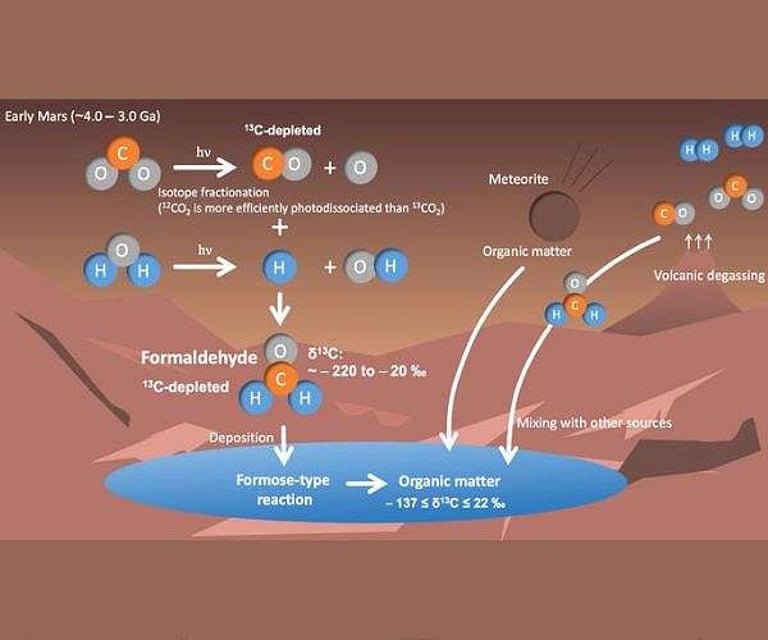Ancient Martian Atmosphere Model Unveils Key Role of Formaldehyde in Organic Matter Production
September 19, 2024
Researchers at Tohoku University have developed a model to understand organic matter production in the ancient Martian atmosphere.
The model suggests that formaldehyde played a crucial role in forming complex organic compounds, including sugars essential for life.
Geological evidence indicates that Mars had liquid water approximately 3 to 4 billion years ago, raising the possibility of ancient life.
NASA's Curiosity rover discovered organic matter in Martian sediments that is unusually depleted in the stable carbon isotope 13C, but the reasons for this anomaly were previously unclear.
Findings revealed that the depletion of 13C in formaldehyde is due to photodissociation of CO2 by solar ultraviolet radiation, which favors one stable isotope over another.
The team's model provides a plausible explanation for the mysterious depletion of 13C, suggesting that formaldehyde produced billions of years ago may account for this observed anomaly.
Variability in carbon isotope ratios was linked to factors such as atmospheric pressure, surface reflectivity, CO to CO2 ratio, and volcanic hydrogen emissions.
The study combined photochemical and climate models to estimate changes in the carbon isotope ratio of formaldehyde over billions of years.
These significant discoveries were published in Scientific Reports on September 17, 2024.
This study, led by Shungo Koyama, Tatsuya Yoshida, and Naoki Terada, focused on formaldehyde (H2CO) as a key component in the production of organic matter.
Summary based on 3 sources
Get a daily email with more Science stories
Sources

Phys.org • Sep 19, 2024
Detailed model suggests organic matter on Mars was formed from atmospheric formaldehyde
ScienceDaily • Sep 19, 2024
Organic matter on Mars was formed from atmospheric formaldehyde